Practical work based on electrolysis offers opportunities for students to investigate chemical reactions and apply their knowledge of the reactivity series
Investigate electrolysis of aqueous solutions with this simple experiment using copper(II) sulfate as the example. The supporting resources introduce electrolysis of other aqueous solutions, including sodium chloride and hydrochloric acid.
Chapter titles: 00:09 Introduction; 00:56 Experiment set up; 02:54 The negative electrode; 03:48 The positive electrode; 04:44 Oxidation and reduction.
Download additional resources
Supporting resources booklet including pause-and-think questions with answers, teacher notes, intended outcomes, follow-up worksheets and structure strips. Plus technician notes and integrated instructions. Editable verions of all worksheets and other key documents are provided.
Teacher notes
Full teacher notes are available in the supporting resources booklet, including ideas for how to use this video and the resources as part of your teaching.
Notes on running the practical experiment
The practical experiment shown in this video is the electrolysis of aqueous copper(II) sulfate. Technician notes and integrated instructions are offered for this experiment.
To avoid confusion, electrolysis should be introduced at the basic level by looking at the electrolysis of molten substances, coupling the theory with a video or teacher demonstration. A video and practical instructions for the electrolysis of molten zinc chloride is available. Once the concept is secure learners can move on to the electrolysis of solutions.
TIP If there is a shortage of individual class equipment it is possible to make a large electrolysis cell by cutting the bottom off a two litre plastic bottle and inserting the carbon electrodes in the neck of the bottle by putting them through two holes in a rubber bung. A standard size rubber bung fits in the neck of the bottle. The electrodes stick up into the electrolyte and down out of the neck of the bottle in order to attach to a power pack. This size of electrolysis cell is also big enough to use normal sized test tubes to collect any gas that is evolved.
Extension work based on the electrolysis of copper(II) sulfate solution
To add higher level extension work to this content, you could ask the learners to test the pH of the solution at the end of the experiment. It will show an acid solution. (Note: the solution is slightly acidic to start with, but becomes more acidic so just test acidity at the end.) The blue colour of the copper(II) sulfate solution should have faded. Ask the learners to look at the four ions that were in the solution to start with and cross out the two ions that have reacted at the electrodes. See if they can work out what substance is left. The H+ ions and SO42- ions join together to make colourless sulfuric acid (H2 SO4), explaining why the blue colour fades and the solution becomes more acidic.
Key terms
Learners will need to have a clear understanding of the following scientific terminology:
- electrolysis
- electrolyte
- inert
- cathode
- anode
- reduction
- oxidation
- half equation
- ions
- electrons
- halogen
Two example Frayer models for the terms ‘electrolysis’ and ‘electrolyte’ are included in the supporting resources. You can find more examples, and tips on how to use Frayer models in your teaching here.
TIP When eliciting learners’ prior knowledge of the term ‘electrolysis’ some learners may have come across the use of electrolysis as a beauty treatment. Hair removal by electrolysis is rather different to the electrolysis of aqueous solutions as it uses electricity to kill off the hair follicle and is not easily compared with simple electrolytes and inert electrodes. However, it would be worth noting that if a person has electrolysis as part of a beauty treatment then they can be asked to hold a small metal electrode in one hand in order to complete the circuit!
Prior knowledge
Learners should already be familiar with structure and bonding from earlier in their 14–16 course. They should be able to identify ionic compounds and describe how positive and negative ions are formed through gain or loss of electrons. It is therefore important that they are familiar with the structure of an atom and, in particular, the arrangement of electrons. Learners should also be able to use the periodic table to help them identify the size of the charge on an ion from the group that element is in.
It is important that learners have been introduced to the reactivity series of metals, including carbon and hydrogen. See our video and supporting resources on the Reactivity series of metals.
The mnemonic ‘OILRIG’, for recalling redox reactions in terms of losing and gaining electrons, is introduced in this video with the expectation that they have covered it before. However, it would be possible to move from this electrolysis experiment into further explanation of redox, and in that case pre-knowledge is not necessarily required as this practical could be used to introduce the concept.
Learners should have a basic understanding of the concept of electrons flowing through wires to make current from their 11–14 studies. It may be pertinent to remind learners that current is the rate of flow of charge, and therefore it is the movement of the positive and negative ions which conducts the electricity in solution. However, if this has not been previously taught this knowledge could be acquired as part of this practical. Learners should recognise the concept that a complete circuit is required for current to flow.
Real-world contexts
- Discover this new device that combines water desalination with electrolysis to produce green hydrogen from seawater.
- Learn about Jamie who works as an environmental process specialist for Tata Steel. His job helps to reduce emissions into the land, water and air.
- Use this microscale practical investigation to show learners how costume jewellery can be made by electroplating a cheap metal with a more desirable metal.
- Explore phytomining, a more sustainable way of extracting valuable metals that also offers an environmentally friendly solution to cleaning up contaminated land.
Common misconceptions
Learners may get confused by the difference between this process and electroplating, especially as copper(II) sulfate solution can be common to both. In electroplating the electrodes used are active because they take part in the electrolysis. One electrode will gain a covering of the metal that is being plated whilst the other metal will disintegrate. The half equations for electroplating reflect this and are not the same as the half equations for electrolysis with inert electrodes. In this experiment the electrodes are inert so they are not taking part in the reaction, but the negative electrode is still being covered with a metal, as in electroplating, and that can cause confusion. Teaching electrolysis first and gaining a good understanding of the concept will help learners realise the difference when electroplating is introduced.
There also may be confusion with the direction of flow of electrons for the current. The conventional direction of current is opposite to the flow of the electrons. Scientists didn’t know about electrons at the time that electricity was discovered so the direction of current was assigned arbitrarily. Learners will need to recognise that electrons are gained at the negative electrode and lost at the positive electrode, despite conventional current flowing from positive to negative. Learners may also be unaware that electrical current can be carried by any charged particle, including positive and negative ions, rather than just negative electrons. Check and refine learners’ definitions of current before proceeding.
More ideas for teaching electrolysis.
Also check out
- Use this microscale demonstration to help highlight the movement of ions in electrolysis.
- Aluminium extraction – video introducing the industrial processes in aluminium extraction, with teacher notes and questions.
- Practical electrolysis – CPD article with ideas for enhancing electrolysis practical work.
- Identifying the products of electrolysis – outline of class practical investigating electrolysis of various solutions.
- Colourful electrolysis – a class practical introducing the electrolysis of brine using universal indicator to follow the reaction.
Downloads
Electrolysis of aqueous solutions: supporting resources
Handout | PDF, Size 0.6 mbElectrolysis of aqueous solutions: technician notes_1
Handout | PDF, Size 1.02 mbElectrolysis of aqueous solutions: integrated instructions
Editable handout | PowerPoint, Size 0.35 mbElectrolysis of aqueous solutions: pause-and-think questions
Editable handout | Word, Size 31.47 kbElectrolysis of aqueous solutions: intended outcomes
Editable handout | Word, Size 0.11 mbElectrolysis of aqueous solutions: follow-up worksheets
Editable handout | Word, Size 0.17 mbElectrolysis of aqueous solutions: structure strips
Editable handout | Word, Size 0.11 mbElectrolysis of aqueous solutions: Frayer models
Editable handout | PowerPoint, Size 73.42 kb
Additional information
Real-world contexts added by Ian McDaid.


Practical videos | 14–16 years
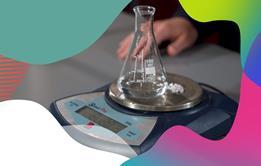
Videos of core practical experiments for flipped learning, remote teaching or revision
- 1
- 2
- 3
- 4
- 5
- 6
 Currently
reading
Currently
reading
Electrolysis of aqueous solutions
- 8
- 9
- 10
- 11
- 12
- 13
- 14




























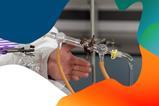

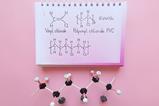

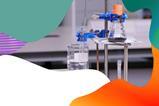
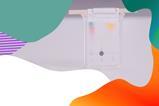

















No comments yet